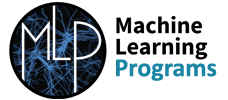AI in action: MLPrograms analyses risks for the insurance industry

Developments in AI are moving fast and the potential is huge. But how exactly is AI applied in practice? Start-up MLPrograms uses modern Machine Learning methods to estimate the risks of insurance more efficiently and accurately.
The assessment of risks by insurers is not new. For centuries, insurers have estimated their risks using tables and scales drawn up by actuaries (insurance mathematicians) on the basis of statistics and probability accounts. MLPrograms has drastically changed the game with the use of AI and Machine Learning.
Breanndán Ó Nualláin explains everything in great detail. As his name suggests, Ó Nualláin is from Ireland, but he has lived in the Netherlands for thirty years, where he is a lecturer at the UvA. He never thought about working outside of university, until the corporate world became more interested in AI and data science. This also applied to the insurance industry, in which his current co-founder has a large network. The perfect combination: Ó Nualláin knew everything about data science and AI; his business partners knew the market, had a technical background and were used to leading companies.
Where does MLPrograms currently stand as a company?:
“MLPrograms started three years ago with three co-founders and has grown to a team of 20. We are a small but fast-growing company in the FinTech sector, although we also see ourselves as InsurTech, a FinTech revolution in the insurance world. This growth phase forces you to strike a good balance between acquisition and growth of your team. That is the challenge that lies before us.”
Does being affiliated with the UvA help?:
“I see it more as an extension of my work in education. My role in the team is more of a mentor than a manager, I like to work with inquisitive employees who want to learn and share their knowledge with colleagues. That makes us a special club.”
Why do insurers like working with you so much?:
“Insurers are risk averse, that is an insurer’s revenue model. They want to cover themselves well against possible claims and profit is made by properly assessing risks. The modern methods of Machine Learning that MLPrograms use assess risks over long periods of time, against datasets from the past. This gives a fast and objective process with fewer margins of error.
Actuaries cannot of course use the fine-grained tools, something that we can do with Machine Learning. Without the use of new technologies, you run the risk that risks are estimated differently at different times by different people. The insurer does not want this and neither does the end consumer.”
Can you use an example to explain how Machine Learning is used?:
“One of the insurer’s biggest concerns is fraud. Take car insurance: a customer claims that he parks his car neatly in the garage at night, even though he doesn’t even have a garage. Or worse, a customer who keeps silent that he has been ticketed for dangerous driving. These are all cases of fraud and although we cannot always identify fraud directly, sometimes traces remain in the data that can refer to fraud, demonstrated by the use of ML.”
Do I hear ‘more transparency, fewer errors and lower costs?:
“Yes, because by using our product, an insurer can deploy its scarce research team more efficiently (and thus save money). I am not allowed to give concrete percentages, but I can say that the insurers that purchase our products save on numbers and/or the amount of claims as well as on expensive personnel, if only because their fraud detection teams can be deployed more specifically.”
What is the concrete end product that you offer the insurer?:
“Based on past data, we at MLPrograms can predict how great a customer’s risk is for an insurer, which in turn can adjust the premium accordingly. We call this product claim propensity, or the propensity to file a claim. MLPrograms provides this product as web services, which means that the insurer can ask questions online and have risks assessed, to which we can provide a fairly direct answer. We handle thousands of such requests per second, of course using new technologies such as AI and Machine Learning because this would not be possible by hand.”
Are you developing the market, or is the market developing you? Who follows who?:
“At MLPrograms we are constantly developing new products, whether or not in collaboration with certain insurers. Sometimes that is custom work for one insurer, but we are always looking to develop general products that we can use widely in the market.”
Where is your sales market?:
“Up until now we have focused on the UK, mainly because one of the co-founders in the UK has a large network. Furthermore, we mainly focus on commercial insurance, such as car insurance, houses, real estate and so on. But we are also currently in talks with insurers in the wellness sector.”
Could you also use this application in other ways or sectors?:
“Of course, these Machine Learning methods can be used for other comparable solutions, such as applying for benefits or student finance, but the requirements of legislation are stricter there. Rightly so. Transparency and ‘explainability’ are a great asset.”
The importance of explainable AI was also discussed in a previous article in this series.
“The student or beneficiary has the right to know on the basis of which a conclusion is reached. In addition, a fully automated Machine Learning judgment is strictly prohibited by the GDPR. A person of flesh and blood – a ‘human in the loop’ – must make the final judgment, whether or not based on the output of an ML system.”
You operate in a B2B market, what does the end consumer notice?:
“If all goes well, the end consumer will notice that he or she is getting an insurance product that suits him or her better. And more importantly, at a price point that fits the wallet. Because the consumer is no longer lumped together, but better zoomed in on his or her specific situation.”
Consumers are becoming more empowered and increasingly want to understand what an answer is based on. What does this mean for you?:
“It means that you sometimes have to ignore quantitatively better modelling methods because they are less easy to explain. But if a consumer asks his insurer why his premium is so high, the insurer must have a good story, at least more than ‘MLPrograms thought you were high risk’. That is why our models not only give a judgment, but a well-substantiated judgment.”
Finally, what is your goal for the future?:
“That MLPrograms’ solutions enable the insurer to offer products that are (more) appropriate for the consumer and which benefit all parties involved.”
About the author: Femmie Geradts is the director at Startup Village. Every two weeks she highlights a start-up that applies AI in practice. To view the original article, please visit: https://bit.ly/3PZditz

